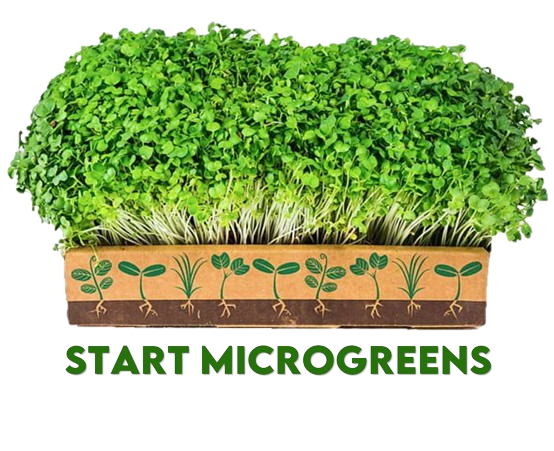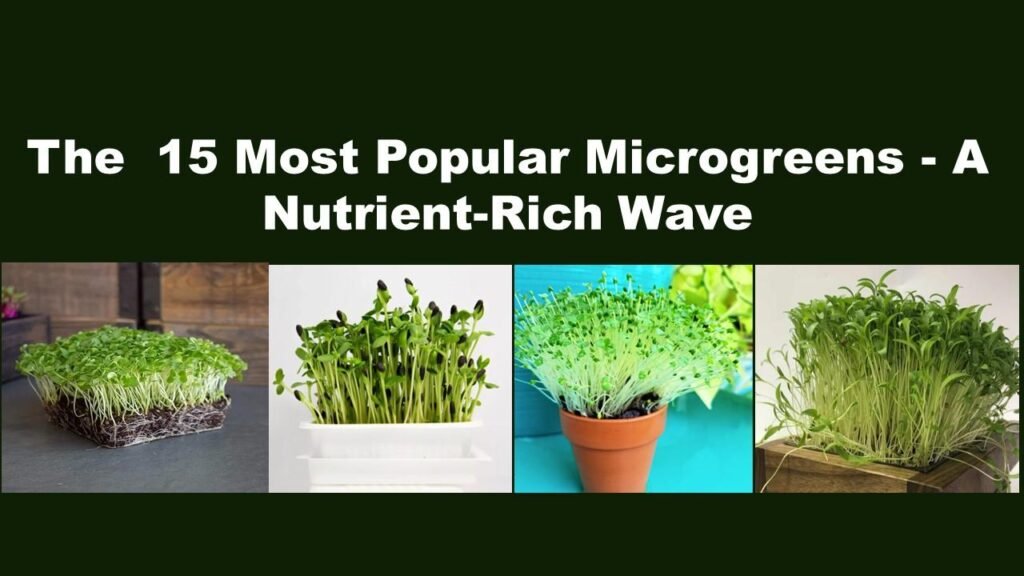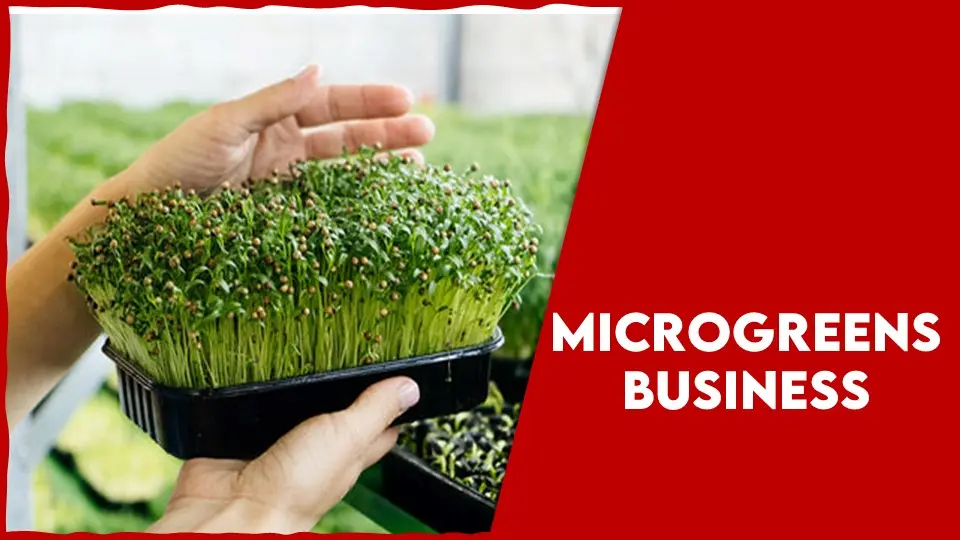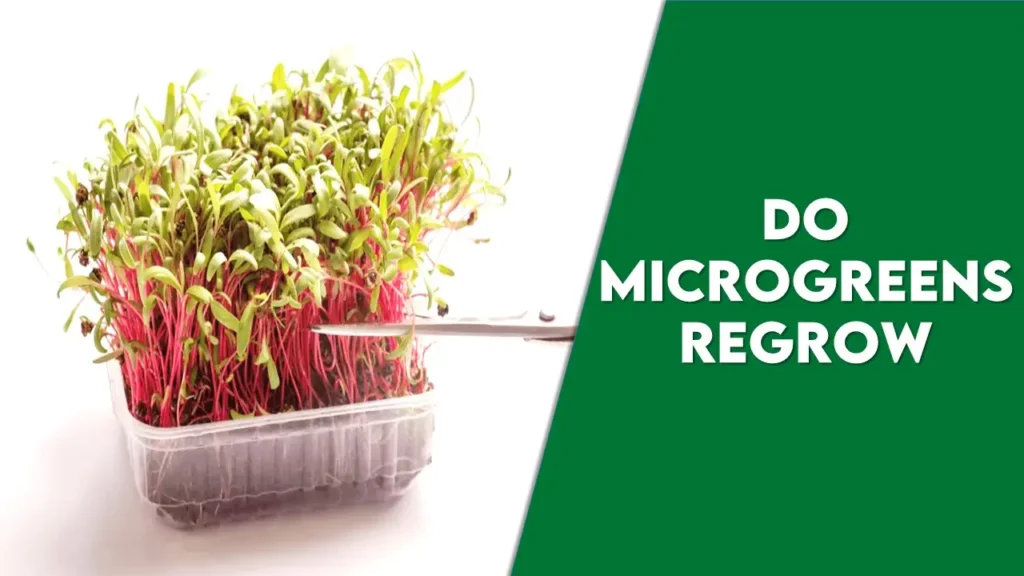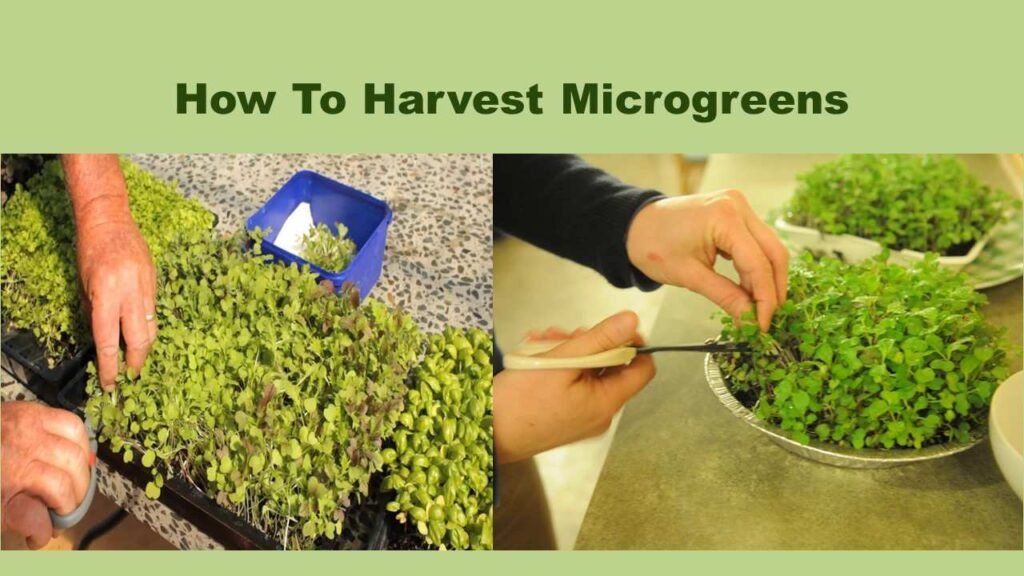How to Grow Radish Microgreens: A Ready-To-Go Super Food
Globally, in the last decade, especially during and after the COVID-19 pandemic, the growing interest of society in eating fresh, healthy, and functional foods, such as sprouted seeds and microgreens, has been on the rise. Microgreens have gained increasing popularity as food ingredients because of their high nutritional value and diverse sensorial characteristics. Microgreens are edible seedlings, including vegetables and herbs, that have been used, primarily in the restaurant industry, to embellish cuisine since 1996. Microgreens are young, immature vegetables that contain higher concentrations of active compounds compared to mature vegetables and seeds.
Among these miniature greens, radish microgreens are a flavorful and versatile addition to culinary creations. They are also called shortly as immune stimulants for their magnificent role in boosting the immune system. Radish microgreens also possess anti-carcinogenic properties. Radish microgreens are also found to be a rich source of vitamin C. Different cultivars have been used, and they vary in appearance due to the differential contents of chlorophyll and anthocyanins.
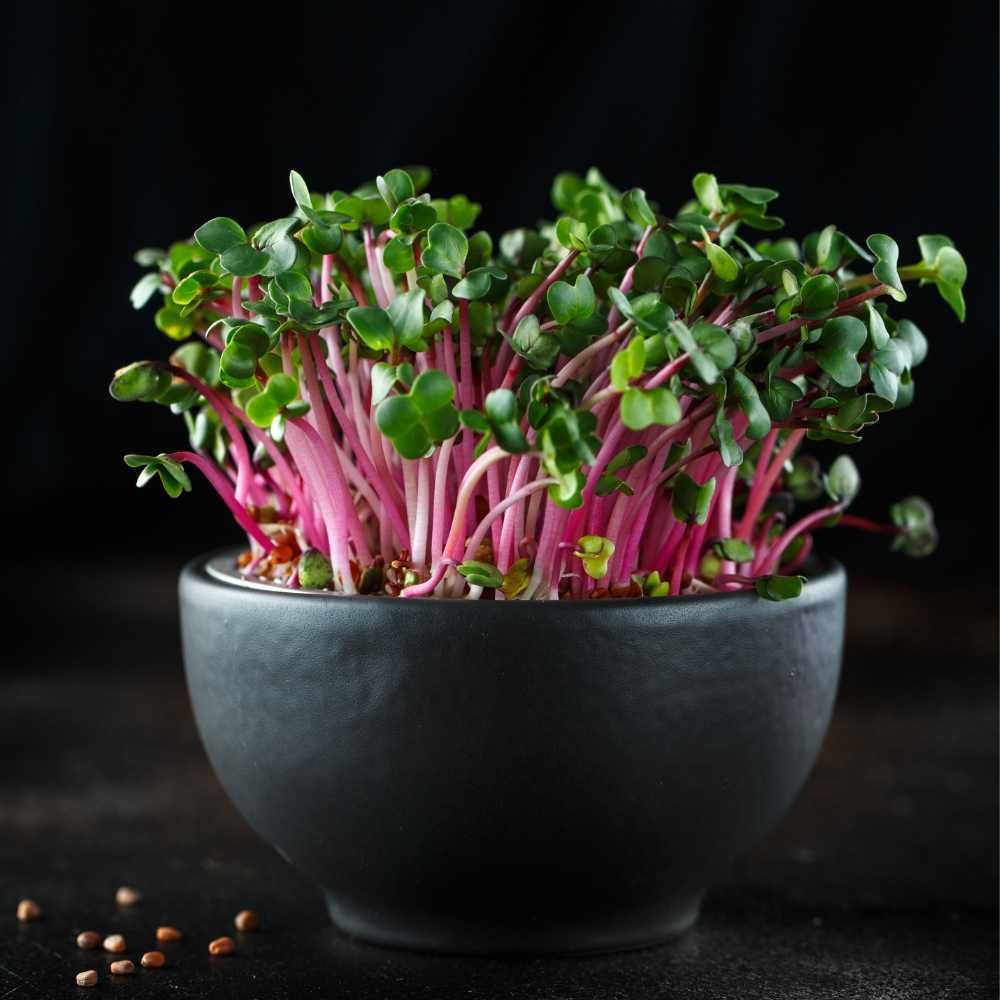
Nutritional Composition of Radish Microgreens
Radish microgreens are a powerful storehouse of nutrients that contains good amounts of vitamin C, and vitamin K. The minerals and fiber important for the overall development are also found abundantly in radish microgreens. They are also good for improving vision and fostering immunity of an individual. They have more nutrient content as compared to mature radish bulbs. The nutrient composition of radish microgreen and mature radish bulbs has been given below
Nutrient Content in Radish Microgreens Vs. Mature Radish Bulbs
| Nutrient | Radish Microgreens | Mature Radish Bulbs |
| Vitamin A | 8 % | 0% |
| Vitamin B | 6-24% | 4% |
| Vitamin C | 48% | 29% |
| Vitamin E | 48% | 29% |
| Phosphorus | 11% | 2% |
| Magnesium | 13% | 4% |
| Zinc | 4% | 2% |
| Iron | 5% | 2% |
Varieties Used for Growing Radish Microgreens
Several varieties have been used for growing radish microgreens. Some of the common varieties, along with their characteristics used for cultivation, have been listed below:
Daikon radish
It has a crispy texture and resembles large carrots. They have a milder flavor—somewhat sweet and slightly spicy—than other radish varieties. They grow in three shapes – cylindrical, elliptical, and spherical. They are ready to harvest after 7 days.
Rambo radish
The color of this variety is purple and gives a spicy taste and flavor. This variety is rich in beta-carotene. They give a crunchy and succulent taste having a fresh flavor. They are fast, easy to grow, and ready for harvest after 7 days.
Triton radish
It is one of the most visually pleasing microgreens, with its beautiful pink stem and deep green leaves. They have a zesty, spicy, and mildly bitter taste profile. They quickly reach 3-4 inches in height and are ready for harvest in 6-10 days. They have dark green leaves with a reddish-purple stem.
Rover radish
This variety performs well in warm summer weather conditions. It has a smooth, dark red, uniform root with a crisp white interior that is tasty and mild. The best time to harvest them is when they are 9 cm tall after 3-4 weeks.
Following Are The Steps to Grow Radish Microgreens
The radish microgreens are a powerhouse of nutrients and minerals. Unlike other microgreens, radish seeds are not soaked before sprouting. They are ready for harvesting in about 10-14 days.
Selection of Seeds
High-quality radish seeds specifically labeled for cultivation practices have been selected.
Growing Medium
Use a sterile and well-draining growing medium. For cultivation, soilless mixes, coconut coir, or vermiculite have been frequently recommended. The fine textured soil is used for easy germination and root development for the plant.
Planting Seeds
Microgreens are grown in flat trays or shallow containers. The container must have access to drain excess water which prevents water logging. The seeds are evenly distributed over the surface and covered with growing medium. Gently press the seed so that it can come into contact with the medium, i.e., seed-to-soil contact. After pressing, mist the surface with water and maintain humidity by covering the tray with plastic wrap until the seeds germinate.
Requirement of Lighting and Water
These microgreens require adequate light for healthy growth. They required 12-16 hours of light per day, and they required consistently moist soil but not waterlogged conditions.
Temperature and Harvesting
The optimum temperature for growth is between 15 and 24. They are harvested 10-14 days after germination, once the first true leaves appear.
Storage
The radish microgreens are properly refrigerated in a breathable container or bag and used within a few days for the best quality.
Health Benefits to Human
Radish microgreens are well-known all around the world. The nutritional composition of radish microgreens can significantly tell us its contribution to the overall well-being of an individual. Many varieties of radish are available in different colors, from red-pink-purple to yellow and green. The radish microgreen is crispy, and its taste is sweet and pleasantly peppery, too. Some of the health benefits of consuming radish microgreens are listed below.
- Radish microgreens aid in the management of healthy weight. These microgreens do not add many calories to the diet and hence can be preferred by people looking for a weight loss challenge
- The radish microgreens help in soothing the digestive system. The dietary fiber content in these microgreens can help improve digestive health thereby preventing constipation-related discomfort and treating bowel irregularities if any.
- These microgreens also help in the detoxification of the food. Mature radishes possess sulfur-containing compounds within them and the same profile is found in these microgreens that may aid in detoxification processes in the body. These compounds are liver-friendly as they help improve liver health through this detoxification process.
- The risk of occurrence of cancer can be lowered by the consumption of radish microgreens. The compounds found in radish, including certain phytochemicals, may have properties that prevent cancer
- Radish microgreens lower the risk of cardiovascular disease. The radish microgreens decrease the bad cholesterol level in the body and aid in enhancing good cholesterol levels which is beneficial for heart health
- These microgreens are well-known for considerably good concentrations of antioxidants, which can improve general health and lower the risk of chronic diseases as they protect the body from damage caused by free radicals.
- It is recommended in jaundice treatment because of the rich source of nutrients and minerals. They are used to treat illnesses like yellow fever which is popularly known as jaundice.
- Proven to be beneficial in urinary disorders as radish microgreens have potential benefits for urinary health.
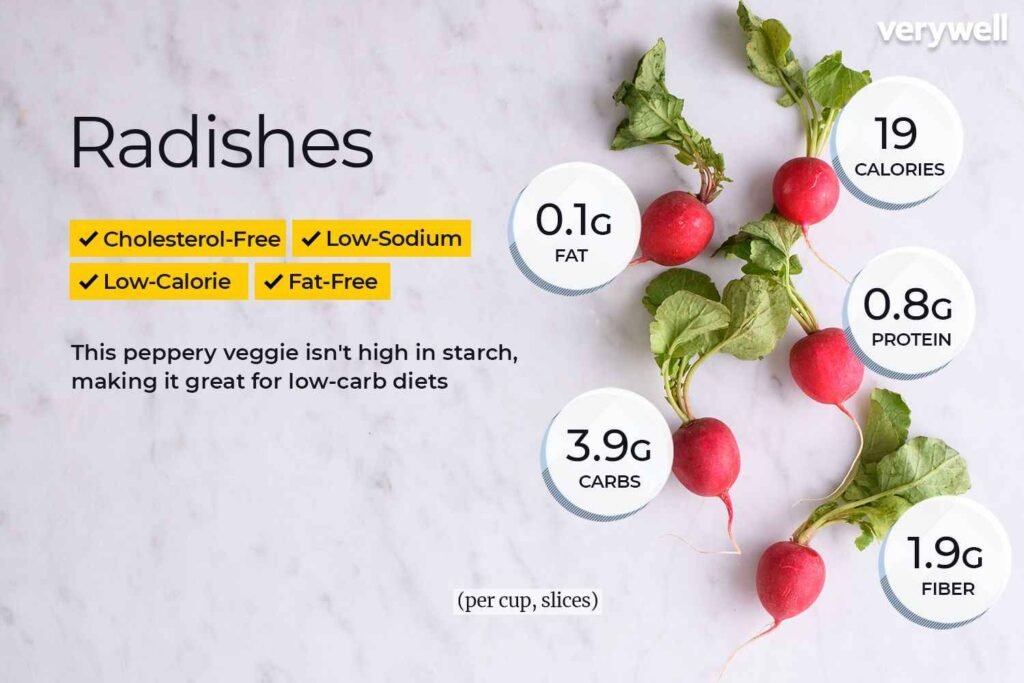
Advantages of Radish microgreens
Although these microgreens have many benefits, including being an abundant source of nutrients and being simple to grow, they also have drawbacks that must be addressed but can be resolved with effort. The advantages of radish microgreen are :
- They have an efficient and short growth cycle. This makes them a preferred option for people of both categories i.e. beginners and home gardeners.
- Their process of cultivation is easy and this makes them a suitable choice for beginners in gardening. They come up well both indoors and outdoors.
- The special peppery tinge of radish microgreens gives a taste explosion and food inclusion to various dishes, including salads, sandwiches, soups, and wraps.
- With indoor cultivation, radish microgreens can be grown year-round, providing a consistent supply of fresh and flavorful greens regardless of the season.
Limitations of Radish Microgreens
- The peppery flavor of this microgreen may be too strong for some people, so it is important to use it sparingly.
- Radish microgreens have a relatively short shelf life after harvest. They are best consumed fresh, and storing them for longer periods can cause a decline in quality.
- For the radish microgreens to grow, certain conditions must be met, such as sufficient watering, light hours, and soil texture. Failure to meet such requirements may result in poor plant germination.
- The growth of the microgreens can also be influenced by the type of seeds you select. Any inconsistency in seed quality or any seed deterioration may lead to variations in flavor, color, and overall crop performance.
- As they are quick to grow, each plant produces a relatively small yield. This may require growing a larger quantity to meet culinary or commercial needs.
Future Perspective of Cultivating Radish Microgreens
- People’s concerns about their health are growing as a result of their increasingly hectic lifestyles, but adopting a healthy lifestyle can be challenging when there is a lack of time and resources.
- One way to solve this issue is to use microgreens, which have higher concentrations of vital nutrients and minerals than mature plants do.
- With the advancement of technologies such as precision agriculture and controlled environment agriculture, these radish microgreens can be grown easily.
- By using the recently emerged technologies, more nutritional advantages of radish microgreens can be reaped from them which will increase and improve their nutritional appeal.
- They can also be grown in urban cities where the cultivable land is less or lost.
- More focus needs to be given to enhancing their shelf life
- Many consumers still need to become more familiar with microgreens and their health benefits. Market penetration for microgreens has to be done to increase the reach and make people aware of them
Conclusion
Radish microgreens, a new plant-based functional food that consists of the seedlings of edible plants harvested after 7-14 days of the germination process, are a stellar source of phytochemicals, such as essential minerals, polyphenols, carotenoids, etc., which impart high antioxidant, anti-inflammatory, anti-diabetic effects, due to which it is considered a superfood that improves health and reduces the risk of diseases. The cultivation of radish microgreens is easy and accessible to every individual and is quite rewarding. As an efficient and quick source of fresh, flavorful greens, radish microgreens have carved a unique niche in the culinary circle.
